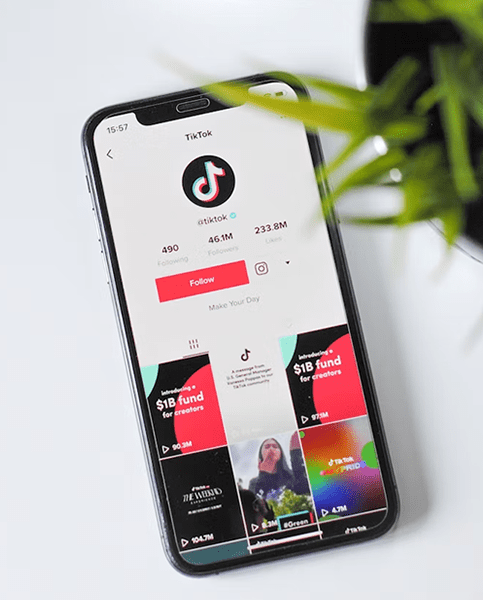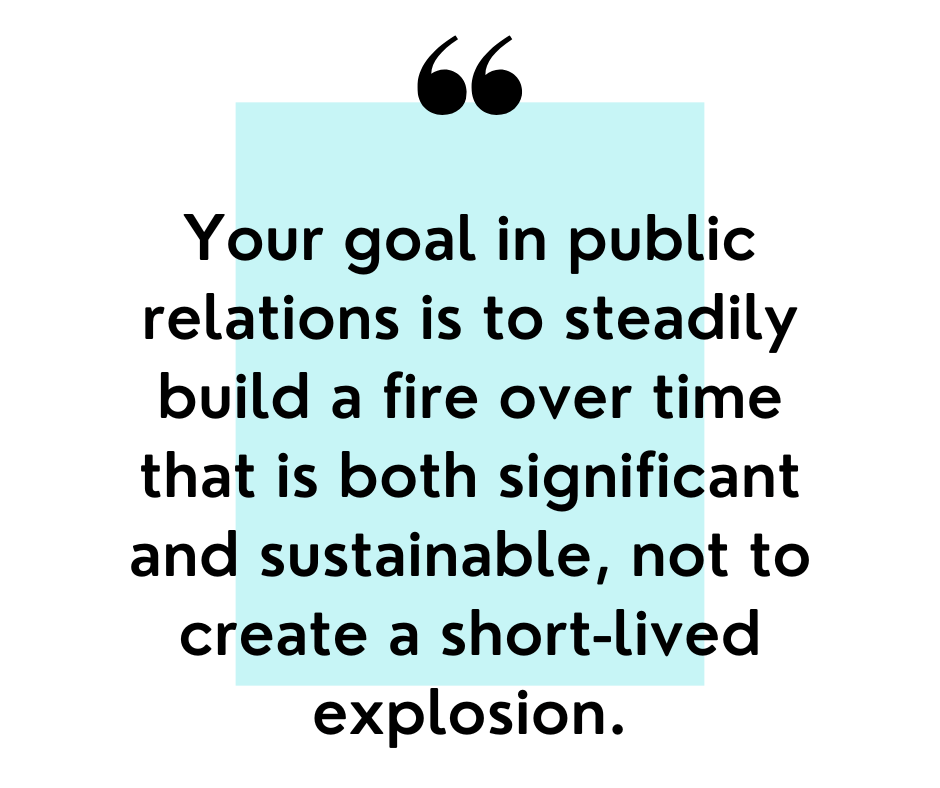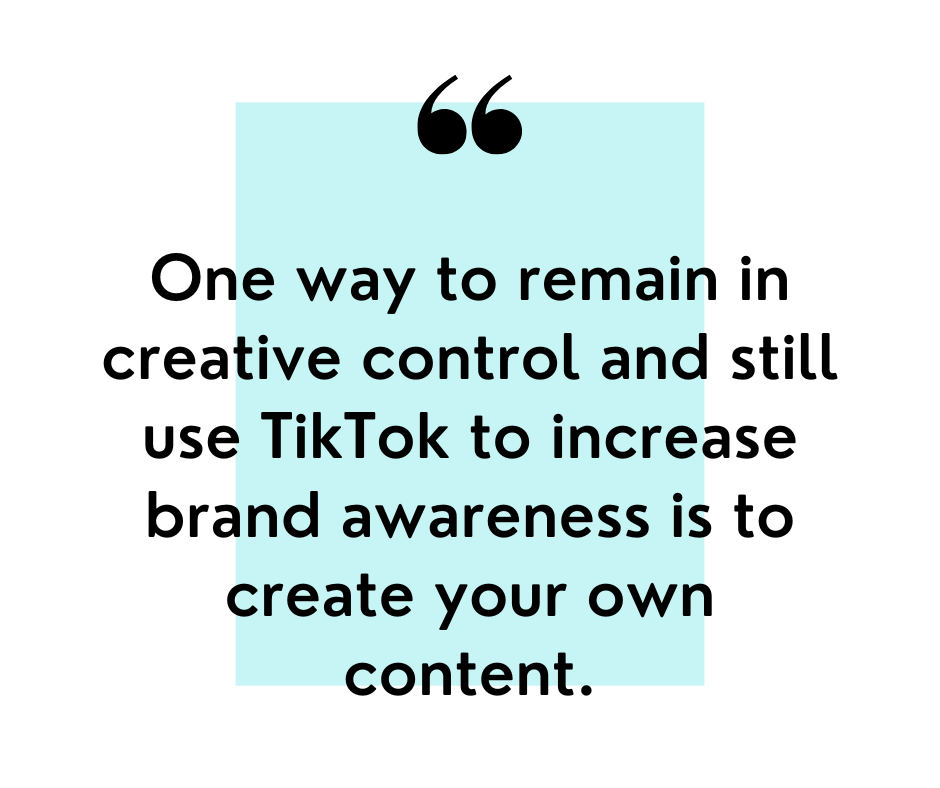 In our last blog post, A Simple and Useful Breakdown of Why You Should Be Investing in TikTok Marketing, we dove into the reasons why marketing on TikTok can provide a substantial ROI (given a well-thought-out strategy). Now, we’re going to get into the details of how to best market your product/message on TikTok.
In our last blog post, A Simple and Useful Breakdown of Why You Should Be Investing in TikTok Marketing, we dove into the reasons why marketing on TikTok can provide a substantial ROI (given a well-thought-out strategy). Now, we’re going to get into the details of how to best market your product/message on TikTok.
Below are 3 proven ways to increase brand awareness through TikTok:
Engage Your Audience
Engaging your audience is a key component to advertising through TikTok. While it’s possible to be successful on the app by only creating and sharing on your brand’s own TikTok page, it’s far more likely to increase brand awareness and drive sales by strategically developing campaigns around user-generated content. (Although, the best way to truly optimize marketing on the app would be a combination of both.)
There are many ways to go about engaging an audience on TikTok. Brands like Pepsi have created viral sounds with a simple structure that allowed users to create their own twist to the campaign. The Pepsi campaign used the #ThatsWhatILike sound and hashtag which included users unfiltered and silly aspects of life while drinking a Pepsi. This challenge was an immense success garnering over 13 billion views.
Guess also used a similar strategy with their #InMyDenim campaign which featured Bebe Rexha’s hit song, I’m a Mess. Content creators would be shown in messy clothes, then changing into an appealing Guess outfit. The Guess campaign ran for 5 days and resulted in over 53.6 million user-generated videos. These two campaigns followed the similar structure of using mega-influencers to start the fun and engaging challenges and inspire the non-influencer TikTok users to keep the challenge running.
Another way for brands to engage their audience via TikTok is by commenting on influencers and other brands’ videos. While Duolingo made their splash onto TikTok by giving consumers a mascot to root for, they remain relevant by commenting (in character, of course) on viral videos. Trends may come and go at quicker and quicker rates, simply making a comment on the trend allows Duolingo to stay current, increase awareness, and maintain their comedic brand identity. In fact, #duolingocomments, a tag tracking TikTok users’ favorite Duolingo comments, has over 1.4 billion videos. By maintaining this unhinged persona, Duolingo is ultimately able to stay relevant on social media through organic aka non sponsored means.
But, don’t be fooled. Simply commenting on TikToks and trends may seem like an easy and quick way to make your brand go viral, however, when used alone it is neither. It’s essential that these strategies are used together and are done so over a period of time. It’s entirely possible for a brand’s marketed content to go viral within their first month, but more often than not brands who explode before building a brand identity and loyal following tend to fizzle out. Your goal in public relations is to steadily build a fire over time that is both significant and sustainable, not to create a short-lived explosion.
An additional pitfall to look out for when beginning to market on TikTok is by believing that what was successful on Instagram will be successful on TikTok, and vice versa. Instagram marketing was based primarily around the idea of gifting/paying influencers to endorse, creating aesthetic content, and engaging the community by replying to comments and DMs. Brands who have found success on TikTok noticed early on that anybody, not just influencers, can make a viral video on the app.
After seeing this pattern, brands began to gift product to ‘average consumers’ who were not only already familiar with the brand, but already a fan. By searching through videos of loyal consumers who have created content with the product or have been commenting on the brand’s content, brands would find new TikTok users to seed the product to. In turn, the ‘average consumers’ would often post more about the product, highlighting their love for the brand. This proved to be a more cost-effective and successful way to create a loyal community of fans along with encouraging more content creation at a fraction of the price of using an influencer campaign.
For more information on the differences between marketing on Instagram and TikTok, lookout for our next TikTok blog post diving into these details.
Create SEO Optimized Content
Getting consumers to create engaging and positive content promoting the brand is truly any marketer’s dream, but it can also be a tricky gamble to find what will resonate with TikTok users. It’s also harder to control the image and brand’s copy when relying on users to spread awareness of the brand/campaign.
One way to remain in creative control and still use TikTok to increase brand awareness is to create your own content. And before diving into creating your own content (or even before any other kind of marketing) some essential decisions regarding the brand must be made. In order to create engaging content for your brand, your budget, target demographic, campaign strategy, and brand identity must all be decided. These decisions will heavily influence the type of content that you create for your brand.
With that said, there are a few styles of content that remain popular regardless of industry. Generally tips/hacks/how-to’s, celebrity, seasonal, anything new, and anything that is currently on-trend will perform best. Note that content highlighting the key message/product within the first 3 seconds sees a substantial 63% CTR (click-through rate).
Another important aspect to keep in mind is SEO. Previously, the term SEO had only referred to Google. Now the term is also applied to marketing on TikTok. Recently, a Google executive noted, “In our studies, something like almost 40% of young people, when they’re looking for a place for lunch, they don’t go to Google Maps or Search—they go to TikTok or Instagram.” The thought process of younger generations defaulting to searching on social channels to find new products or restaurants illustrates how important proper SEO on TikTok really is. Thus when creating content, it’s important to use key phrases that those searching for are also using.
Again, the most effective strategy is a combination of all of these points. However, if a brand with a lower budget is looking to distinguish themselves on TikTok, focusing on consistent and engaging content on the brand’s own TikTok page can be more budget-conscious while remaining effective.
Pitch TikTok Trends to Editorial
Like the chicken and the egg, it’s tough to say whether trends start on TikTok or in real life. However, we do know that TikTok trends have been heavily influencing editorial content at many of the top media outlets. At the time that this blog is being written (August 2022) #BARBIECORE is trending on TikTok. In response, the following outlets have all written stories on Barbiecore: People, Daily Mail, WhoWhatWear, Vogue, WWD, and StyleCaster. 
While Barbiecore is in full swing at the major outlets right now, there were signs of it before it became a viral trend. Ideally, brands’ marketing/PR teams would have gotten a whiff of this incoming trend and pitched the relevant products weeks to months before Barbiecore reached its full peak.
It can be difficult to predict every viral trend in time to maximize on its editorial coverage. But by simply paying attention, the clues to next month’s and next year’s hottest trends are all around you.
Stay tuned for our upcoming blog post on more behind the scenes details into what makes an influencer campaign successful!
If you would like to learn more about how to best maximize TikTok or strategies to increase brand awareness please email RED@RED-PR.com.



